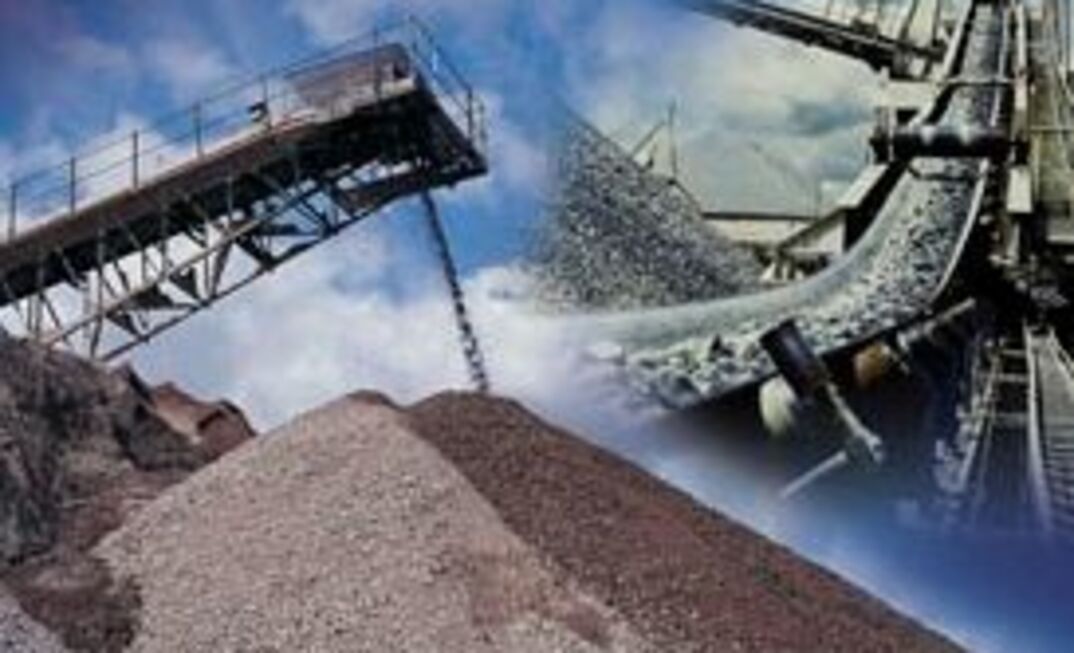Representatives for Goodyear Tire and Rubber presented at the Technical Study Panel on the Utilization of Belt Air and the Composition and Fire Retardant Properties of Belt Materials in Underground Coal Mining’s second meeting near Pittsburgh, Pennsylvania.
Goodyear said much of the safety initiatives put in place had exceeded worldwide requirements.
The manufacturing of conveyor belt for US mines includes a top cover measuring 3/16–3/8in gauge, a carcass consisting of one to five plies of fabric, each with a rubber coating on both sides, and pulley covers of 1/16–1/4in. It noted that US beltline does not have rubber-covered belt edges.
In beltline production, standard runs measure 1000–3000 feet. Each group is vulcanised, inspected and tested.
Beltline trends are especially apparent in longwall operations, the individuals noted, with panel belt, slope belt and mainline being utilised. The increases seen in production over time have also made for stronger, longer belt needs.
In fact, in a study of panel conveyors between 1992 and 2006, they said, the average and maximum pounds per square inch width (PIW) has jumped 50% from 600 and 750 to 1000 and 1500. Additionally, the average thickness of belts has gone from 0.435in to 0.655in.
The overall increase is 42% in mainline conveyors, with PIW up from 600 and 800 to 1000 and 1500. Average thickness is up from 0.525in to 0.745in. Slope conveyors, while seeing the slightest increase, have also improved from 2000 and 4000 over the same time period to 3000 and 5800 and an average thickness up to 0.87in from 0.685in.
Goodyear said it continues to look at ways to improve the quality of its belts, with those main factors being durability, adhesion, flammability resistance and the development of more flame retardants that are permanent.
The three key areas for durability are cover abrasion resistance, carcass rip/tear strength, and belt fatigue resistance. As the company pointed out, “durability improves safety” through reduced fire hazard and belt breakage potentials.
Durability of mainline belt, according to the company, is up from three to five years to as much as 10 years today. What’s more, rotating abrasion figures are down from 200cu.mm to 100cu.mm. “Field studies in coal mining show good correlation to durability,” Goodyear said.
Regarding durability of panel and mainline belt rates 1000 piw, rip/tear/tensile strength improved between 1992 and 2006. Tear strength in panel lines has gone from 1300lbs to 2570lbs, a 97% increase, while rip strength improved 27% from 3760lbs to 4770lbs; and mainline results prove a 21% jump from 1300lbs to 1570lbs for tear strength and 19% for rip strength from 2760lbs to 4480lbs.
Fatigue resistance, the company said, is an area where the company is placing significant focus. A strong link between fatigue curves/actual performance to durability improvements has been shown.
Adhesion, or rather the lack of it, is another strong research area for Goodyear. Because belt can separate and the fabric within them can come loose, an ignition hazard can easily become reality. Improvements made in adhesion technology have increased over the last decade to where minimum and average adhesions have been improved.
Additionally, “Goodyear belts exceed the MSHA 2G standards [and we] test every roll of belting for release,” it said in the presentation. Its testing showed 3 for a flame based on 60 seconds and an afterglow rate of 2 based on 180 seconds, and more flame retardant properties are remaining in the belt at higher temperatures.
To say belt design and technology has improved in the past 14 years is an understatement, according to the belt production force. Belts are now stronger, thicker, more durable, more flame retardant and greatly exceed federal requirements for fire stability.
Safety Features
When it comes to safety through flame resistance, the biggest factors are flame and smoke. Currently, standards only take the two properties associated with flame – ignition and propagation – into consideration. The density and toxicity of smoke, on the other hand, are not measured as part of current standards or proposed regulations.
Smoke, a significant danger to miners as seen through the deaths at Aracoma, also needs to be taken into consideration as part of improved belt safety, according to Goodyear. Ignition isn’t necessarily a prerequisite for smoke, as smoke can be the product of frictional heat alone.
To battle smoke, two groups of flame retardants can be added to hydrocarbon materials such as rubber and plastic – halogenated and halogen-free. The former includes mixtures that include bromine and chlorine, which are a more cost-effective solution and are effective at resisting propagation; the latter requires higher levels to be effective against propagation and has a higher cost depending on the type and flammability resistance level needed.
To analyse best results, the Mine Safety and Health Administration conducted flame tests and drum friction tests. Another method, it added, is the core calorimeter to measure heat release rate, mass changes in the sample smoke density and gas. The advantages to the method include the ability to measure key properties in controlled conditions, smoke and flammability measurement capabilities, the cross-use of the unit to other industries and the small sample size needed to get feedback.
Temperature detection and suppression are also key to belt safety, according to the company. Infrared (IR) sensors are being used to detect IR radiation, which measures material temperatures as well as those of the belt and the coal, not the air.
When hazards are measured, alarms can be installed to alert workers to the situation. Hot spots in coal piles can also be revealed using the technology.
Goodyear employs a systems-based approach to belt safety, which includes the core factors of flammability, durability, smoke density, temperature detection and smoke toxicity. For safety to improve all of the elements must be evaluated and new test standards that are inclusive and open must be developed, it said.
One regulatory agency cannot be left with the daunting task, however. All areas of industry can become involved, from government to unions, belt manufacturers and mines themselves.
























